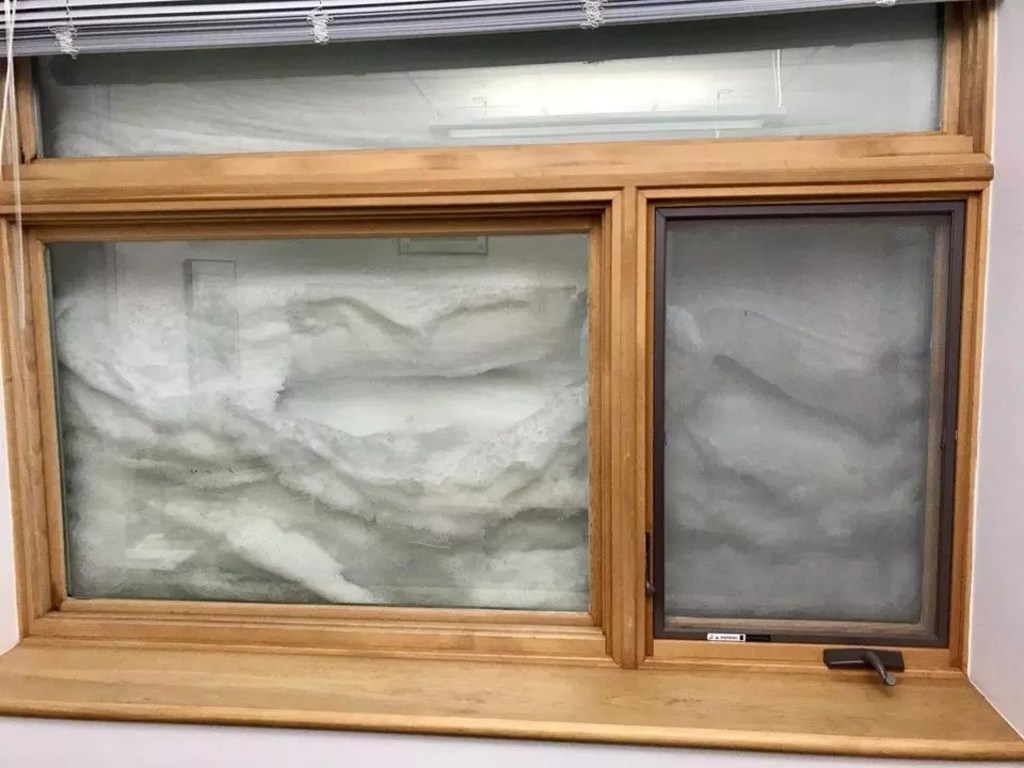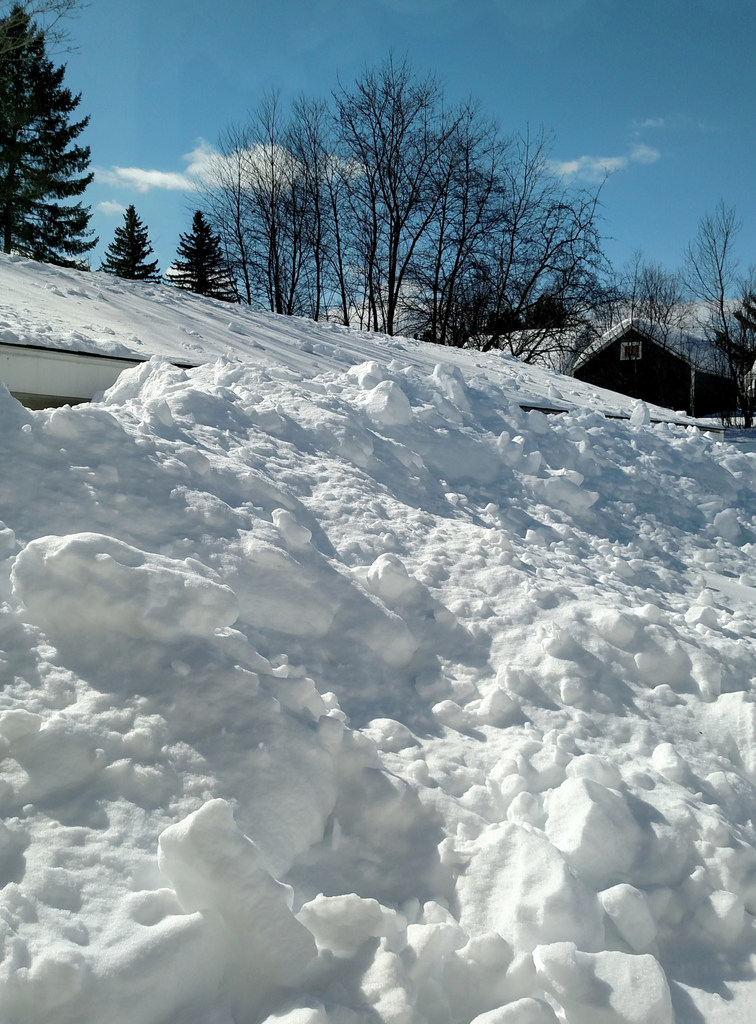
CARIBOU, Maine — After a winter that has seen record setting snowfall and below normal average temperatures, March brings with it the first glimpse of spring on the horizon, according to the National Weather Service in Caribou.
The agency issued its monthly weather preview late last week, which includes weather patterns and past weather statistics about the month.
Caribou has received 149.4 inches of snow since last October, which is 66.9 inches above the normal value of 82.5 inches. The most snowfall the region has ever received is 197.6 inches, which fell during the winter of 2007-2008, according to Mal Walker, meteorologist at the NWS.
In addition, the meteorological fall, which is the three month period from September through November 2018, finished with below average temperatures but well above average snowfall across southern and eastern Maine.
In Houlton, longtime resident Jody Shore said she will be “thrilled” to see the winter end.

Snow piles reach the roof of this garage in Presque Isle, making it possible to walk up onto the roof without a ladder. The roof required clearing for the fourth time this season on March 3. (Paula Brewer)
“I think most of us will,” she said. “I love to snowshoe and ski, and this is really the first winter in a long time where I was just totally sick of everything by early February. There have been too many storms, and we’ve had to shovel our roof twice. I am over it.”
There is some hope on the horizon, according to the NWS. During March, the average high temperature climbs from 29 degrees on March 1 to 40 degrees by the end of the month. Customarily, the biggest change starts to happen around March 13, according to forecasters.
The warmest temperature ever observed during the month was 75 degrees on March 21, 2012. The coldest temperature ever recorded was 28 below zero on March 2, 2001.
On average, 18.3 inches of snow falls during the month. Over the years, March snowfall has ranged from just 1.4 inches in 2006 to 47.1 inches in 1955. The greatest calendar day snowfall in March was on March 14, 1984, when 28.6 inches of snow fell. There have been three times since the winter of 1939-1940 when the monthly snowfall exceeded 40 inches.
There is a continuous snowpack in nearly all years during March, according to the weather service. Typically, the snowpack reaches its greatest depth at the end of February and begins to diminish during the second half of March.
Marc Haverman, who lives in Presque Isle, said that he also is “just about ready to close the book” on this winter.
“I grew up here and I moved back here 20 years ago after I retired,” he said Monday. “I don’t recall a winter like this in some time. I’ve got a long driveway and the snowblower quit halfway through winter, so I had to buy another one. I had to buy a ton more pellets for my pellet stove than I had expected. It has been too long and too expensive.”







